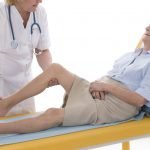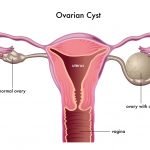PCOS Treating Adrenal Androgen Excess
Fiona McCulloch, BSc, RAc, ND
As naturopathic doctors, we all know about the importance of adrenal health in the treatment of any endocrine disorder. When it comes to the most common endocrinopathy in women of reproductive age, polycystic ovary syndrome (PCOS), the adrenals play an even more important role.
PCOS is diagnosed by the Rotterdam criteria,1 ie, the presence of at least 2 of the following 3 features:
- Ovulatory dysfunction
- Hyperandrogenism
- Polycystic ovaries on ultrasound
Rather than a distinct disease, PCOS is a complex disorder including insulin resistance, weight gain, infertility, cardiovascular risks, hirsutism, acne, and other virilizing signs. PCOS is estimated to affect approximately 15-20% of reproductive-age women worldwide.2
Hyperandrogenism is one of the most important diagnostic criteria for PCOS. The idea of a non-androgenic PCOS phenotype is highly controversial. Counter to the Rotterdam criteria, the Androgen Excess and PCOS Society argues that hyperandrogenism, either clinical or chemical, is central to the disorder and is required for diagnosis.3
Adrenal Androgens in Women with PCOS
Androgens are derived from 2 main sources in females – the ovaries and the adrenal glands. Interestingly, the steroid-producing tissues of the adrenals and the ovaries have a common embryonic origin. In addition to this, adrenal tissue has actually been found within the ovary itself.4
It’s been estimated that up to 50% of women with PCOS demonstrate high adrenal androgen levels, which can often be seen as an excess of DHEA-S on blood workups.4 It’s important to note that DHEA-S secretion naturally declines with age and, as such, this marker must be measured in relationship to age in order to determine whether levels are abnormal.
Current evidence suggests that in women with PCOS, the adrenals produce androgens through an exaggerated response to adrenocorticotropic hormone (ACTH) stimulation from the pituitary gland.4 Obesity, insulin resistance, and ovarian secretions seem to play a limited role in adrenal androgen excess.2
Adrenal Androgen Pathways
The adrenal cortices produce 3 major androgenic steroids: DHEA, androstenedione, and testosterone, in decreasing order of amount. It’s important to know that adrenal androgens act primarily as pre-hormones that are converted into more active hormones in various tissues.
As an example of this, androstenedione can be converted in the liver to testosterone, reflecting approximately 50-60% of all testosterone in women.2 DHEA and DHEA-S also serve as pre-hormones and can be converted into androstenedione and testosterone in different tissues of the body. A significant portion of DHEA is converted into DHEA-S in the adrenals, though the action of the enzyme DHEA sulfotransferase. As the adrenals produce almost all DHEA-S found in the body, serum levels are a fairly accurate marker of adrenal androgen production. Neither DHEA nor androstenedione are accurate measures of adrenal output, as significant percentages of these hormones are also produced by the ovaries.
In the past, it’s generally been thought that the adrenals do not produce testosterone directly; however, recent research suggests that small quantities may indeed be produced therein.5 New research also suggests that DHEA can also be converted to dihydrotestosterone (DHT), the most potent androgen, from androstenedione in peripheral tissues.6
Causes of Adrenal Androgen Excess
Early-onset adrenal activation, known as premature adrenarche, increases the risk of developing PCOS in women by 50%.7 In a young woman, an early onset of pubic/axillary hair and apocrine sweat gland development can mark this condition.
When it comes to the hypothalamic-pituitary-adrenal (HPA) axis, circulating ACTH levels in women with PCOS are actually similar to those found in age/weight-matched control women.2 The ACTH response to corticotropin-releasing hormone (CRH) stimulation has also been found to be similar in PCOS and control women. However, the production of adrenal androgens in response to ACTH stimulation is exaggerated in women with PCOS.2
As excessive stimulation of the adrenals by stress responses increases androgen output, it is helpful to look at the impact of stress in individual women’s case histories. Along this same line of thinking, one suggested cause of PCOS-related adrenal androgen excess is peripubertal stress.2
Women with PCOS also secrete more cortisol than control women.8-10 Total urinary cortisol metabolites are higher as well, suggesting increased breakdown and excretion of cortisol.11 It’s possible that this could result in increased pituitary output of ACTH in an attempt to maintain cortisol levels, simultaneously increasing adrenal androgen production.
The Role of Insulin Resistance in Adrenal Gland Activity
As is well known, insulin resistance is a central aggravating factor of the PCOS condition. Insulin stimulates ovarian androgen production. It also lowers sex hormone-binding globulin, leaving androgens free to act on receptors.2
The role of insulin on the adrenal production of androgens, however, is not fully understood. Several studies have suggested that high insulin may suppress adrenal steroid production and that lower insulin levels are linked with higher DHEA levels. Other conflicting studies link insulin resistance with higher adrenal androgen levels. Overall, however, elevated adrenal androgen precursors, particularly DHEA, appear to provide protection from cardiovascular risks and result in lower insulin levels.12
Genetic Causes of Adrenal Androgen Excess
The production of adrenal androgens in women with PCOS appears to be under significant genetic control. Various studies have determined that elevated levels of DHEA-S are familial in nature; however, it’s also difficult to determine the effect of environmental influences such as elevated androgens during the perinatal or pubertal periods.13 Interestingly, the Cincinnati Myocardial Infarction and Hormone Family study found that the heritability of DHEA-S levels is stronger in women than in men,14 and other research has found that among women with PCOS, levels of DHEA are inherited by a degree of up to 67%.15 Approximately 10 genetic variants in sulfotransferase (SULT2A1) have also been associated with the production of elevated DHEA-S levels.2
In summary, it appears that in response to ACTH stimulation, women with PCOS produce increased levels of androgens but do not have any actual abnormalities in HPA-axis function.16 Extra-adrenal factors such as obesity, insulin, and ovarian hormones do not play a large role in the adrenal androgen excess, with the exception of testosterone, which may increase the conversion of DHEA to DHEA-S.
Assessment of Adrenal Androgen Excess
Physical Exam and History
As discussed, various clinical signs and aspects of the medical history can help alert you to the possibility of androgen excess and PCOS in your patients.
- Signs of hirsutism, acne, and androgenetic alopecia
- History of disrupted ovulation or irregular menses
- History of premature adrenarche
- History of past severe acne or irregular menses, as adrenal androgen excess may decrease with age
- History of peripubertal stressors
- Assessment of current stressors, sleep and mood disorders
Laboratory Testing
Although a patient’s history and clinical picture can provide significant clues of androgen imbalances, lab tests can help to confirm them. It’s recommended to measure several steroid hormones, including both precursors and downstream hormones. A combination of salivary, urine, and serum tests will yield the most reliable results (Table 1).
Table 1. Suggested Lab Tests for Evaluating Androgen Excess
| Biomarker | Specimen |
| 4-point cortisol panel (AM, noon, PM, night) | Saliva |
| Free (unconjugated) cortisol metabolites | Urine |
| DHEA | Serum |
| DHEA-S | Serum |
| Androstenedione (in relationship to patient’s age) | Serum |
| Sex hormone-binding globulin (SHBG) | Serum |
| Total testosterone | Serum |
| Bioavailable testosterone | Serum |
| Dihydrotestosterone (DHT) | Serum |
(DHEA = dehydroepiandrosterone; DHEA = dehydroepiandrosterone sulfate)
Integrative Medicine Treatments for Adrenal Factors in PCOS
When treating PCOS, it’s important to first assess to what degree adrenal androgen excess may be problematic. As the adrenal androgens are the more protective form of androgens found in women with PCOS, and are the least influenced by insulin resistance, it’s important to first tease out individual aspects of the case. In a younger woman, adrenal androgen excess may be predominant, whereas an older woman may have developed insulin resistance that changes her picture. In a patient that is highly insulin-resistant, much of the androgen excess originates from the ovaries. As is always the case in a naturopathic approach, the adrenal component must be treated with simultaneous attention to the entire person and her current status of health (including life stage).
Adrenal Androgen Excess: Treating Patients with Increased Stress
Numerous nutritional and herbal agents are useful in patients experiencing chronic stress. Some of the most efficacious ones are listed here:
- Phosphatidylserine: A dose of 200 mg of phosphatidylserine/phosphatidic acid complex per day may help to normalize ACTH and serum cortisol secretion in chronically-stressed individuals.17 Another study found that 800 mg of phosphatidylserine per day blunted the stress-induced activation of the HPA axis.18
- L-Theanine: Found in green tea, L-theanine has been found in mice to protect normal ACTH secretion in the presence of stress via modulation of the HPA axis19
- Hypericum perforatum: In patients with PCOS who also display symptoms of depression or anxiety related to stressors, St John’s wort has been found to attenuate the plasma increases of ACTH.20 As women with PCOS are at increased risk for depression and anxiety,21 this herb may be of great help.
- Melatonin: When administered at bedtime in patients who are deficient in this hormone or who have sleep disorders, melatonin may help reduce ACTH stimulation of the adrenal gland22
- Rhodiola rosea: The active ingredient in rhodiola, salidroside, has been found in animals to attenuate CRH expression in the hypothalamus and significantly reduce the levels of cortisol, thereby improving depressive symptoms and regulating the HPA axis23
- Schizandra chinensis: This herb is often used in Traditional Chinese Medicine for the treatment of stress. A 2007 study found that schizandra was an effective protector against stress-related increases in cortisol, protein kinase, and nitric oxide in rabbits.24
- Lavandula officinalis: Inhalation of the vapor of lavender oil has been found to decrease plasma ACTH levels25 and reduce self-reported anxiety26
Lifestyle
It’s important to not overlook the benefits of stress reduction via lifestyle modifications, including meditation, deep breathing, visualization and other mindfulness activities.
In addition, as some adaptogenic herbs may increase serum androgens, it is important to consider contraindications before prescribing commonly used adaptogen formulas.
Gut Repair
And let’s not forget the gut, particularly in patients who have symptoms or a history that suggest intestinal permeability, as there exists an important connection between the gut and the HPA axis. Probiotics that improve intestinal permeability have been found to attenuate the response of the HPA axis to stress.27 It’s also known that cortisol increases intestinal permeability through mast cell-dependent mechanisms; as such, women with PCOS who make excessive adrenal steroids may be at increased risk.28 As a result, a “4-R” gut repair program may be helpful in PCOS patients with simultaneous signs of abnormal intestinal permeability.
Adrenal Androgen Excess: Anti-androgen Therapeutics
Once the effects of the patient’s individual HPA axis have been addressed, it is often helpful to then incorporate natural anti-androgenic therapies. Many significant clinical problems related to excess adrenal androgens occur due to their conversion to testosterone or DHT. Anti-androgen therapies may be particularly beneficial for women with androgen-related hirsutism, acne, androgenetic alopecia, and androgen-related menstrual irregularities, who wish to avoid the side effects of conventional approaches such as spironolactone or finasteride.
- Spearmint Tea: At a dosage of 1 cup BID, spearmint tea has been shown in 2 studies to have anti-androgenic properties.29,30 Over a 30-day period, spearmint tea brought about a significant reduction in free and total testosterone levels in a group of 42 women with confirmed PCOS and hirsutism.30
- Glycerrhiza glabra: Licorice was found in a 2004 trial to significantly decrease testosterone levels in healthy female patients after 1 month of treatment.31 The study concluded that licorice may exert its anti-androgenic action through blocking 17-hydroxysteroid dehydrogenase and 17-20 lyase. The glycyrrhizin and glycyrrhetic acid constituents of licorice have significant anti-androgen effects,32-34 which may be helpful in reducing androgenic symptoms in women with PCOS.
- Paeonia lactiflora: Peony is another popular anti-androgenic herb. It is often combined with Glycyrrhiza glabra in a ratio of 1:1 in Traditional Chinese Medicine for the treatment of PCOS. Studies have found that this combination is able to decrease the production of testosterone without altering the production of androstenedione and estradiol.34
- Camellia sinensis: For patients with androgenetic alopecia, hirsutism, or acne, Camellia sinensis (green tea) may be of benefit. Epigallocatechins in green tea are 5α-reductase inhibitors, which decrease the production of DHT.35 As green tea can also increase sex hormone-binding globulin, it can be helpful in patients with elevated free androgens.36
- Serenoa repens: Saw palmetto is a well-known plant-derived anti-androgen. By moderately inhibiting the enzyme 5α-reductase, saw palmetto shows promise in the treatment of androgenetic alopecia.37
- Ganoderma lucidum: Among its many health benefits, reishi mushroom exerts a significant anti-androgenic action.38 Research suggests that its triterpenoid fraction in an ethanol extract is able to inhibit both type 1 and type 2 5α-reductase.39 In addition, it appears to suppress the growth of cells that are stimulated by testosterone itself, suggesting that it may also have a role to play as an androgen receptor blocker.39
- Rosmarinus officinalis: As a topical therapy for androgenetic alopecia, rosemary leaf extract was found in a 2013 study to improve hair regrowth in mice with androgen-induced hair-growth interruption.40 The extract showed inhibitor activity upwards of 82.4% in inhibiting 5α-reductase, and also decreased the binding of DHT to androgen receptors.40
Conclusion
The adrenals are an important component of a case workup for all women with PCOS. Not only are they important with respect to cortisol secretion, they are a key source of androgens in many women with androgen excess. Excessive androgens in women can inhibit ovulation and cause hirsutism, acne, and androgenetic alopecia. Overall, in looking at adrenal health in women with PCOS, we need to address the stressors that may stimulate excessive DHEA output, and then minimize the end-products of adrenal androgen output, ie, testosterone and DHT. By addressing both of these issues, we can help to promote healthy ovulation and reduce the stressful effects of androgen excess for women with PCOS.
 Fiona McCulloch, BSc, RAc, ND, graduated from the Canadian College of Naturopathic Medicine in Toronto, Ontario. Her undergraduate degree is in biological sciences from the University of Guelph (Guelph, Ontario). She is the founder of White Lotus Integrative Medicine in Toronto, and her clinical practice is focused on her passion: women’s health, endocrinology, autoimmunity, and fertility concerns. She has published numerous articles on the topics of evidence-based medicine for infertility and women’s health concerns, and is set to publish her first book, PCOS: Fertility Restored.
Fiona McCulloch, BSc, RAc, ND, graduated from the Canadian College of Naturopathic Medicine in Toronto, Ontario. Her undergraduate degree is in biological sciences from the University of Guelph (Guelph, Ontario). She is the founder of White Lotus Integrative Medicine in Toronto, and her clinical practice is focused on her passion: women’s health, endocrinology, autoimmunity, and fertility concerns. She has published numerous articles on the topics of evidence-based medicine for infertility and women’s health concerns, and is set to publish her first book, PCOS: Fertility Restored.
References:
- Rotterdam ESHRE/ASRM-Sponsored PCOS consensus workshop group. Revised 2003 consensus on diagnostic criteria and long-term health risks related to polycystic ovary syndrome (PCOS). Hum Reprod. 2004;19(1):41-47.
- Goodarzi MO, Carmina E2, Azziz R. DHEA, DHEAS and PCOS. J Steroid Biochem Mol Biol. 2015;145C:213-225.
- Azziz R, Carmina E, Dewailly D, et al. Positions statement: criteria for defining polycystic ovary syndrome as a predominantly hyperandrogenic syndrome: an Androgen Excess Society guideline. J Clin Endocrinol Metab. 2006;91(11):4237-4245.
- Pal L. Polycystic Ovary Syndrome: Current and Emerging Concepts. New York, NY: Springer; 2014.
- Stanczyk FZ. Diagnosis of hyperandrogenism: biochemical criteria. Best Pract Res Clin Endocrinol Metab. 2006;20(2):177-191.
- Nakamura Y, Hornsby PJ, Casson P, et al. Type 5 17beta-hydroxysteroid dehydrogenase (AKR1C3) contributes to testosterone production in the adrenal reticularis. J Clin Endocrinol Metab. 2009;94(6):2192-2198.
- Ibáñez L, Dimartino-Nardi J, Potau N, Saenger P. Premature adrenarche–normal variant or forerunner of adult disease? Endocr Rev. 2000;21(6):671-696.
- Carmina E, Lobo RA. Pituitary adrenal responses to ovine corticotropin releasing hormone in polycystic ovary syndrome and other hyperandrogenic patients. Gynecol Endocrinol. 1990;4(4):225-232.
- Azziz R, Black V, Hines GA, et al. Adrenal androgen excess in the polycystic ovary syndrome: sensitivity and responsivity of the hypothalamic–pituitary–adrenal axis. J Clin Endocrinol Metab. 1998;83(7):2317-2323.
- Glintborg D, Hermann AP, Brusgaard K, et al. Significantly higher adrenocorticotropin-stimulated cortisol and 17-hydroxyprogesterone levels in 337 consecutive, premenopausal, Caucasian, hirsute patients compared with healthy controls. J Clin Endocrinol Metab. 2005;90(3):1347-1353.
- Stewart PM, Shackleton CH, Beastall GH, Edwards CR. 5 alpha-reductase activity in polycystic ovary syndrome. Lancet. 1990;335(8687):431-433.
- Carmina E, Lobo RA. Prevalence and metabolic characteristics of adrenal androgen excess in hyperandrogenic women with different phenotypes. J Endocrinol Invest. 2007;30(2):111-116.
- Rotter JI, Wong FL, Lifrak ET, Parker LN. A genetic component to the variation of dehydroepiandrosterone sulfate. Metabolism. 1985;34(8):731-736.
- Rice T, Sprecher DL, Borecki IB, et al. The Cincinnati Myocardial Infarction and Hormone Family study: family resemblance for dehydroepiandrosterone sulfate in control and myocardial infarction families. Metabolism 1993;42(10):1284-1290.
- Franks S, Webber LJ, Goh M, et al. Ovarian morphology is a marker of heritable biochemical traits in sisters with polycystic ovaries. J Clin Endocrinol Metab. 2008;93(9):3396-3402.
- Mongioì A, Macchi M, Vicari E, et al. Pituitary and adrenal response to ovine corticotropin-releasing hormone in women with polycystic ovarian syndrome. J Endocrinol Invest. 1988;11(9):637-640.
- Hellhammer J, Vogt D, Franz N, et al. A soy-based phosphatidylserine/ phosphatidic acid complex (PAS) normalizes the stress reactivity of hypothalamus-pituitary-adrenal-axis in chronically stressed male subjects: a randomized, placebo-controlled study. Lipids Health Dis. 2014;13:121.
- Monteleone P, Maj M, Beinat L, et al. Blunting by chronic phosphatidylserine administration of the stress-induced activation of the hypothalamo-pituitary-adrenal axis in healthy men. Eur J Clin Pharmacol. 1992;42(4):385-388.
- Unno K, Iguchi K, Tanida N, et al. Ingestion of theanine, an amino acid in tea, suppresses psychosocial stress in mice. Exp Physiol. 2013;98(1):290-303.
- Grundmann O, Lv Y, Kelber O, Butterweck V. Mechanism of St. John’s wort extract (STW3-VI) during chronic restraint stress is mediated by the interrelationship of the immune, oxidative defense, and neuroendocrine system. Neuropharmacology. 2010;58(4-5):767-773.
- Hung JH, Hu LY, Tsai SJ, et al. Risk of psychiatric disorders following polycystic ovary syndrome: a nationwide population-based cohort study. PLoS One. 2014;9(5):e97041.
- Torres-Farfan C, Richter HG, Rojas-García P, et al. mt1 Melatonin receptor in the primate adrenal gland: inhibition of adrenocorticotropin-stimulated cortisol production by melatonin. J Clin Endocrinol Metab.2003;88(1):450-458.
- Yang SJ, Yu HY, Kang DY, et al. Antidepressant-like effects of salidroside on olfactory bulbectomy-induced pro-inflammatory cytokine production and hyperactivity of HPA axis in rats. Pharmacol Biochem Behav. 2014;124:451-457.
- Panossian A, Hambardzumyan M, Hovhanissyan A, Wikman G. The adaptogens rhodiola and schizandra modify the response to immobilization stress in rabbits by suppressing the increase of phosphorylated stress-activated protein kinase, nitric oxide and cortisol. Drug Target Insights. 2007;2:39-54.
- Yamada K, Mimaki Y, Sashida Y. Effects of inhaling the vapor of Lavandula burnatii super-derived essential oil and linalool on plasma adrenocorticotropic hormone (ACTH), catecholamine and gonadotropin levels in experimental menopausal female rats. Biol Pharm Bull. 2005;28(2):378-379.
- Braden R, Reichow S, Halm MA. The use of the essential oil lavandin to reduce preoperative anxiety in surgical patients. J Perianesth Nurs. 2009;24(6):348-355.
- Ait-Belgnaoui A, Durand H, Cartier C, et al. Prevention of gut leakiness by a probiotic treatment leads to attenuated HPA response to an acute psychological stress in rats. Psychoneuroendocrinology. 2012;37(11):1885-1895.
- Vanuytsel T, van Wanrooy S, Vanheel H, et al. Psychological stress and corticotropin-releasing hormone increase intestinal permeability in humans by a mast cell-dependent mechanism. Gut. 2014;63(8):1293-1299.
- Akdoğan M, Tamer MN, Cüre E, et al. Effect of spearmint (Mentha spicata Labiatae) teas on androgen levels in women with hirsutism. Phytother Res. 2007;21(5):444-447.
- Grant P. Spearmint herbal tea has significant anti-androgen effects in polycystic ovarian syndrome. A randomized controlled trial. Phytother Res. 2010;24(2):186-188.
- Armanini D, Mattarello MJ, Fiore C, et al. Licorice reduces serum testosterone in healthy women. Steroids. 2004;69(11-12):763-766.
- Somjen D, Knoll E, Vaya J, et al. Estrogen-like activity of licorice root constituents: glabridin and glabrene, in vascular tissues in vitro and in vivo. J Steroid Biochem Mol Biol. 2004;91(3):147-155.
- Tamir S, Eizenberg M, Somjen D, et al. Estrogen-like activity of glabrene and other constituents isolated from licorice root. J Steroid Biochem Mol Biol. 2001;78(3):291-298.
- Takeuchi T, Nishii O, Okamura T, Yaginuma T. Effect of paeoniflorin, glycyrrhizin and glycyrrhetic acid on ovarian androgen production. Am J Chin Med. 1991;19(1):73-78.
- Hiipakka RA, Zhang HZ, Dai W, et al. Structure-activity relationships for inhibition of human 5alpha-reductases by polyphenols. Biochem Pharmacol. 2002;63(6):1165-1176.
- Nigata C, Kabuto M, Shimizu H. Association of coffee, green tea, and caffeine intakes with serum concentrations of estradiol and sex hormone-binding globulin in premenstrual Japanese women. Nutr Cancer. 1998;30(1):21-24.
- Prager N, Bickett K, French N, Marcovici G. A randomized, double-blind, placebo-controlled trial to determine the effectiveness of botanically derived inhibitors of 5-alpha-reductase in the treatment of androgenetic alopecia. J Altern Complement Med. 2002;8(2):143-152.
- Fujita R, Liu J, Shimizu K, et al. Anti-androgenic activities of Ganoderma lucidum. J Ethnopharmacol. 2005;102(1):107-112.
- Liu J, Shimizu K, Konishi F, et al. Anti-androgenic activities of the triterpenoids fraction of Ganoderma lucidum. Food Chemistry. 2007;100(4):1691-1696.
- Murata K, Noguchi K, Kondo M, et al. Promotion of hair growth by Rosmarinus officinalis leaf extract. Phytother Res. 2013;27(2):212-217.










